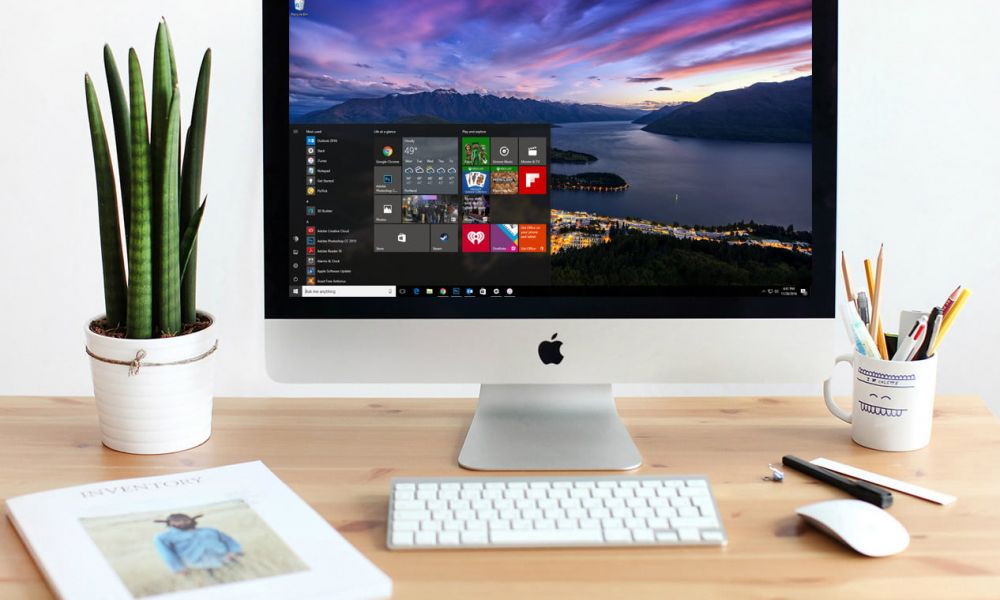Need to Run Windows on Your Mac? You May Want to Stick with Intel for Now

Toggle Dark Mode
By all indications, Apple’s transition to Apple Silicon in its new Macs is going to be a win in a whole lot of areas — we can expect better performance across the board, better battery life on MacBooks, and even tighter compatibility with iPhone and iPad apps.
However, one of the biggest open questions right now is what the fate will be for those who actually still need to run Windows on their Mac in some form. We already know for certain that Boot Camp is going away, so dual-booting Windows and macOS is going to be completely out of the question, but it seems that the matter of virtualization through apps like VMware and Parallels is a much more complicated question.
To be clear, Apple is offering a stopgap in the form of its Rosetta 2 transitional layer, which is the same approach it took during the move from PowerPC to Intel chips 14 years ago. This will allow apps that haven’t yet been updated for the new ARM-based Apple Silicon chips to continue to run on the newer Macs, but the catch is that it’s going to be restricted to traditional apps, not things that actually need to dig deep into the operating system like VMware and Parallels do.
Unlike Boot Camp, however, which appears to be completely dead, VMware and Parallels can both update their virtualization apps to work on Apple Silicon chips. In fact, it’s been done before; back in the PowerPC days, Microsoft offered an app called Virtual PC that let users run Windows on pre-Intel Macs. It was extremely slow, but it worked.
However, we expect that Apple Silicon chips will have power to spare, so it’s very likely that future virtualization apps could run Windows without any noticeable performance problems. It probably won’t ever be adequate for gaming on Windows, but could be fine for those who still have other Windows apps that they need to use.
However, Apple Silicon users may face another legal technicality that could keep Windows off their new Macs.
Licensing Issues
Technically speaking, Windows is only licensed to run on Intel processors. Although Microsoft does offer a version of Windows 10 for ARM, it’s designed primarily for its own Surface tablets and licensed only to very specific companies who produce ARM-based PCs; it’s not available to the general public, and Microsoft has said that, for now at least, it has no plans to change this.
This naturally precludes any possibility of Boot Camp right out of the gate, however Apple has already nixed any idea that such technology could be supported on Apple Silicon Macs even if Microsoft were to make an ARM-based version of Windows available for Mac users.
However, this also means that Windows couldn’t even legally be run on ARM-based Macs even if it could run under Intel-style virtualization. Since the underlying CPU would still be ARM-based, it would therefore be in violation of Microsoft’s Windows license. For its part, Apple has demonstrated an ARM-based version of Parallels Desktop running Linux in a virtual machine, but has been completely silent about the possibility of Windows support.
Of course, Microsoft has been relatively vague about its future plans, so it’s entirely possible that its stance could change once new Apple Silicon Macs hit the street, but if you can’t function without the ability to run Windows on your Mac and you’ve been waiting to upgrade, it may be a good time to do so before the last Intel Macs get phased out.
For the 13-inch MacBooks, the 13-inch MacBook Pro and MacBook Air that were just refreshed this spring will very likely be the last to feature Intel chips, since new Apple Silicon versions are expected to arrive this fall. On the other hand, if you’re looking at a 16-inch MacBook Pro or desktop iMac, there’s a good chance that these each have one more Intel model coming this year, since Apple’s higher-end Macs aren’t expected to get Apple Silicon until sometime in 2021.






